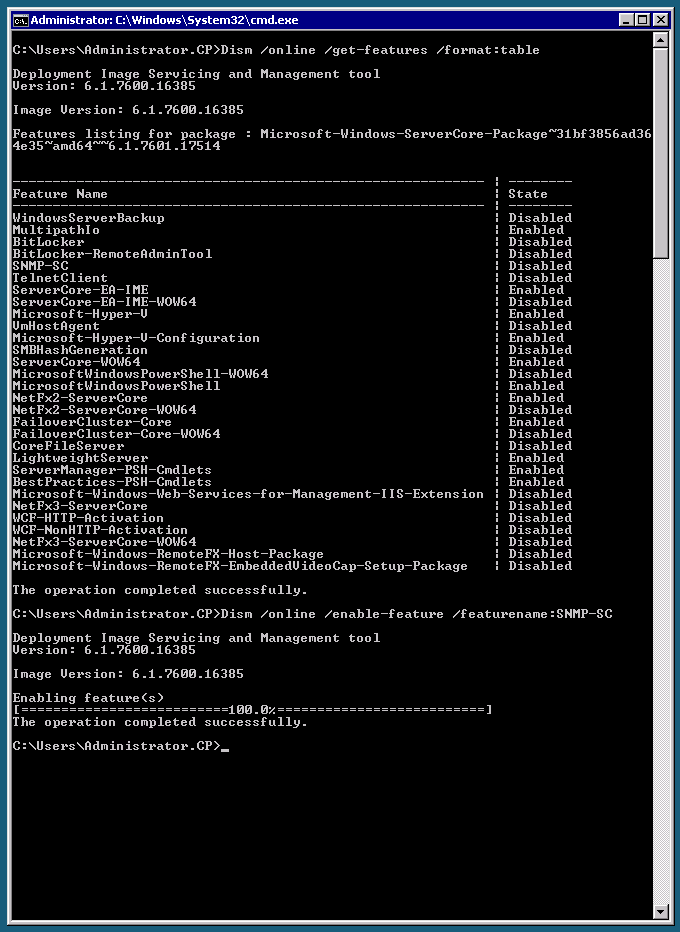

- #How to install server vdi command line how to#
- #How to install server vdi command line drivers#
- #How to install server vdi command line code#
- #How to install server vdi command line windows#
I did some hacking and finally found the Registry key that controls NumLock.
#How to install server vdi command line windows#
In addition, I can't find this information in any NT books or magazines, at any NT seminars, or in the Microsoft Windows NT 4.0 Resource Kit. You might think Control Panel offers a setting for this function-but it doesn't. When you install or configure Windows NT, you can't set NumLock to come on and stay on. All the columns will resize automatically. Make sure the window containing the columns is the active window, and press Ctrl+Alt+Num+. In response to Gilford Grijt, "Quickly Resize Your Columns," (Reader to Reader, November 1998), I have an even quicker way to simultaneously resize columns under Windows NT 4.0 or Windows 95 rather than double-clicking all the column dividers individually. Then, you can use the Next and Back options in the NT installation dialog boxes to go forward or backward through the installation process. Select \winnt\system32\cmd.exe, and click Open. Select the Enable LMHOSTS check box, and click Import LMHOSTS. In the network configuration, under TCP/IP Properties, select the WINS Address tab. You can bring up a command prompt at the network configuration portion of an NT installation. You might also want to use the Nbtstat command to check how NT interprets an imported LMHOSTS file or to verify whether NetBIOS is passing through a router.
#How to install server vdi command line drivers#
For example, you might need to use the Ping command to test connectivity or to copy files or drivers onto the hard disk. Having a command prompt available during a Windows NT installation is useful. To guarantee compatibility with User Manager for Domains, you need to limit the group name length to 20 characters.
#How to install server vdi command line code#
You must run the code on an NT machine, because most LAN Manager APIs are available only on NT. Insert your own values under the command-button code. Use this code in a new VB standard project with one command button.
#How to install server vdi command line how to#
The Visual Basic (VB) 5.0 code in Listing 1, page 28, shows how to use these API calls. The NetGroupSetInfo (for global groups) and NetLocalGroupSetInfo (for local groups) LAN Manager APIs let you rename NT groups. If you don't have to rely on these systems, you can use the LAN Manager API to rename NT groups. For information about these problems, see the Microsoft articles "Windows NT Global Groups Are Limited to 20 Character Names" and "User Manager Cannot Rename a Group" at.

(Although you can rename a group by copying it under a new name, you lose the internal security ID-SID-that numerous access control lists-ACLs-on files and folders refer to.) User Manager for Domains doesn't let you rename groups because of interoperability problems between OS/2 LAN Manager, DOS LAN Manager, IBM LAN Server, and Windows for Workgroups (WFW). If you're a Windows NT domain administrator, you know that you can't rename a group under NT. If we print your letter, you'll get $100.\] We will edit submissions for style, grammar, and length. Now that I have “introduced” the VDI, we will see the prerequisites.\ Please include your phone number.

Virtualization is based on Hyper-V and as for an RDS server, the connection is made through the Windows RDP client.Īs you can see I put in dedicated quotation marks at the resource level, the virtual machines will share the Hypervisor resources, they will be careful of the CPU over-allocation which could impact the overall performance of the virtual machines.

In a VDI infrastructure, for each user a virtual machine is started and dedicated to the user, therefore the environment is no longer shared and the resources are “dedicated” to the user and uses a Desktop version of Windows like Windows 10. As a reminder, on an RDS environment, a remote desktop host server will provide a shared environment to several users who will connect to the same server and therefore share resources (CPU, RAM, etc.). The main difference between VDI and an RDS farm is the isolation from the environment made available to the user. In this tutorial, I will explain how to install and configure a VDI (Virtual Desktop Infrastructure) environment.īefore getting to the heart of the matter, I will quickly present to you what a virtual office infrastructure is and especially the difference with an RDS environment. Checking the elements of the new VDI collection Creating a collection of virtual desktops


 0 kommentar(er)
0 kommentar(er)
